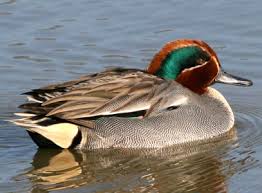Quarry Species, Identification And Shooting Seasons
The Quarry that can be taken by Wildfowl’s is controlled by law and also by good practise. The principal regulation is the Wildlife and Countryside Act of 1981 which permits the taking of nine species of duck, four species of geese and three species of wader within certain prescribed seasons. This and other acts also define what methods can be used, for example it is illegal to use automatic weapons that have more than two rounds in their magazine. Wildfowling Associations, such as BASC and the CWA, also impose certain other limitations to preserve species such as in severe weather when restraint or a suspension of activities is required to protect birds in a weakened state.
The principal species of interest to the wildfowler in the local harbours are mallard (Anas platyrhynchos), wigeon (Anas penelope) and teal (Anas crecca). These are principally migratory duck which breed in the tundra regions of northern Europe and which migrate in large numbers every autumn to spend the winter in Western Europe and Great Britain



Full details of the identification of all quarry species, including game birds and mammals can be found in this handy guide produced by the British Association For Shooting And Conservation

For many there is a close season when it is illegal to shoot them, and this helps to ensure that they are able to breed successfully and move between breeding and wintering grounds. The bird quarry species and their open seasons in England, Wales, Scotland, Northern Ireland, the Isle of Man and the Channel Islands are shown below:

A detailed code of practise for Wildfowling is published by the British Association for Shooting and Conservation. This covers both the regulations that must be followed and what is considered to be good practise such as respect for quarry. Click on the image opposite to download a copy or visit the BASC web site by clicking on the logo below for more information on Wildfowling

